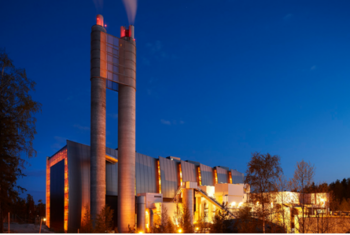Deployment of bio-CCS: case study on Waste-to-Energy
Deployment of bio-CCS: case study on Waste-to-Energy – Fortum Oslo Varme (FOV)
Despite growing global ambitions towards increased material recycling, waste-to-energy (WtE)
will likely continue to play an important role in coming decades as a means of managing waste
streams that for one reason or another may be difficult to treat otherwise. Typically, 40-60%
of municipal solid waste (MSW) used as input in WtE facilities are of biogenic origin in developed
countries, meaning that implementation of carbon capture and storage (CCS) to WtE partially
can be classified as bio-CCS and lead to negative CO2 emissions. There are currently several
ongoing projects exploring CCS in WtE settings, and this case study presents what is arguably
the project that has come the farthest: the FOV (Fortum Oslo Varme) WtE plant in Oslo,
Norway.

Photo by Fortum Oslo Varme AS
Find the link to the report below:


